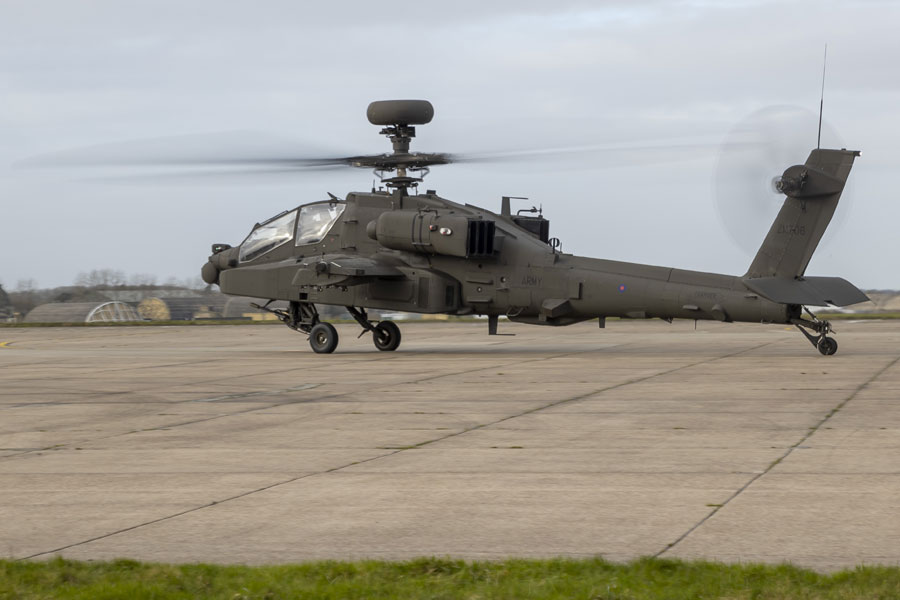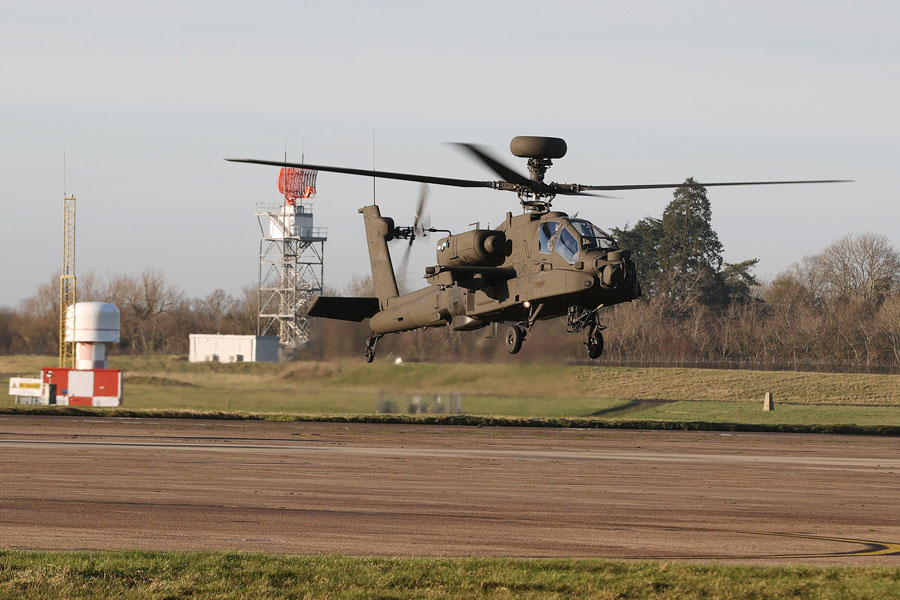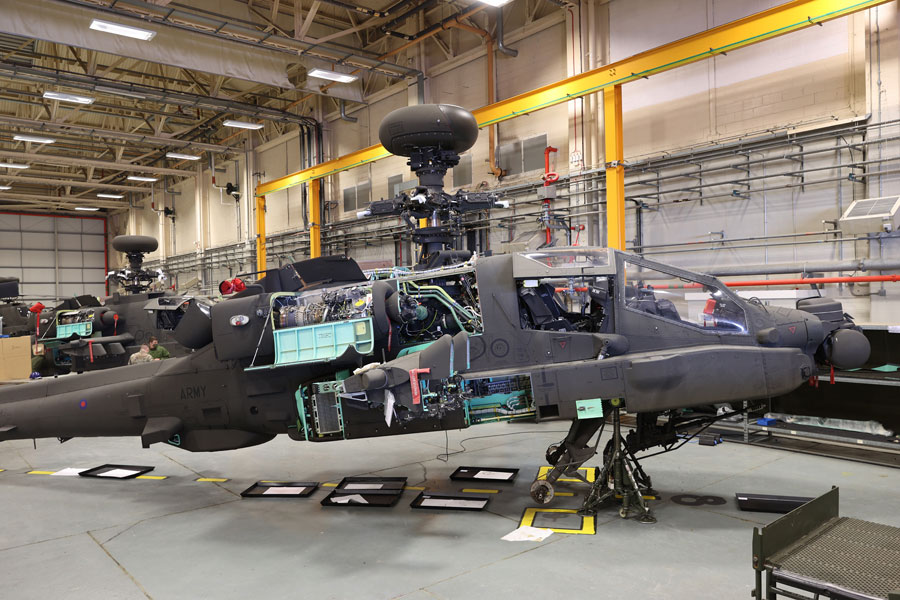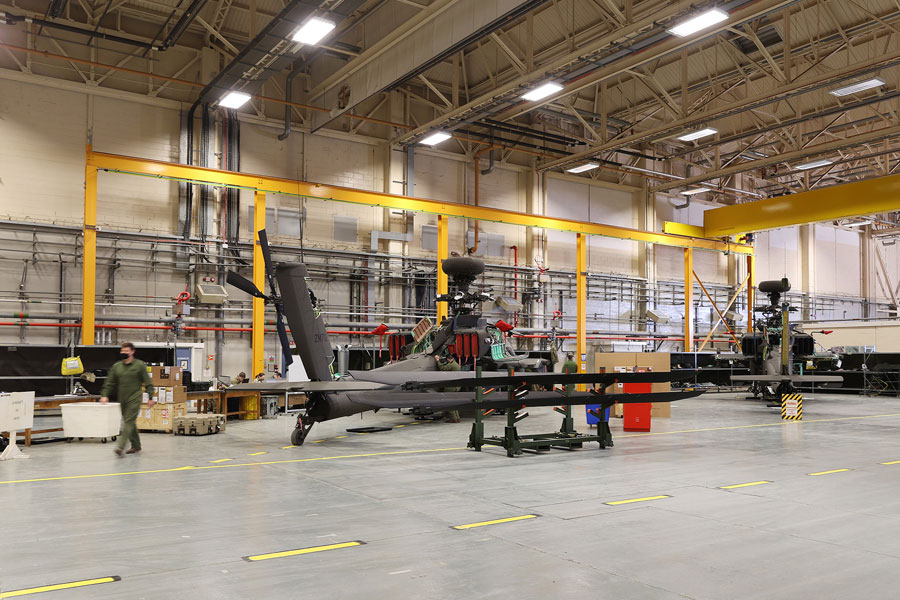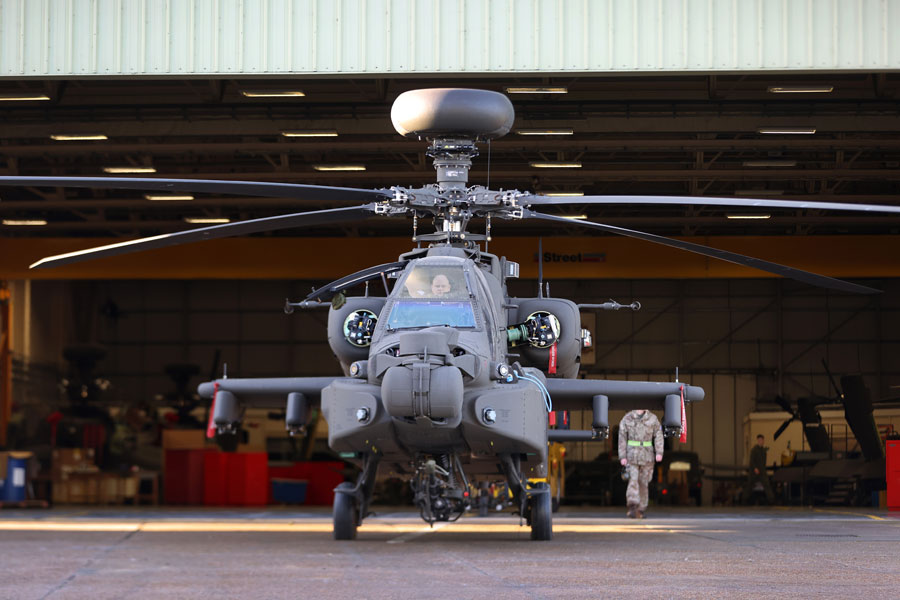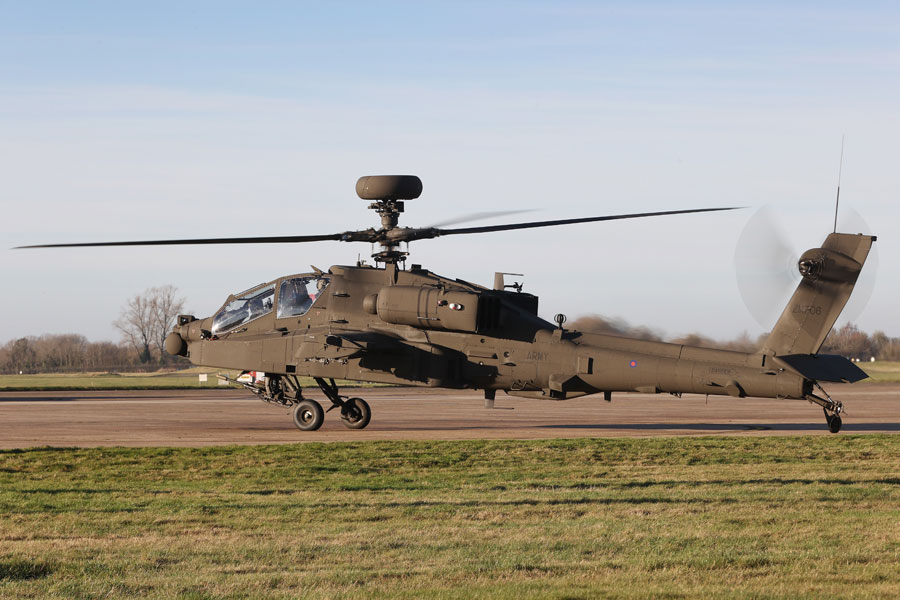Work is going at pace to bring the Apache AH-64E, the British Army’s new attack helicopter, into frontline service.
~
News Release 1, Whitehall, 21 January 2022: Fifty Apache AH-64E Version 6 aircraft have been purchased from the United States to provide a state-of-the-art attack aviation capability that will be a key element of how the Army fights in the coming decades, as set out in the Future Soldier programme.
The AH-64E replaces the Apache Mk.1, which entered service in 2001 and proved itself as a battle winning asset on Afghanistan and Libya. The Boeing-built AH-64E features new drivetrain and rotor blades to boost flying performance; improved sights and sensors; communications systems to share data with other helicopters, uncrewed aircraft systems and ground forces; and embedded maintenance diagnostic systems to increase aircraft availability.
3 Regiment Army Air Corps, part of 1st Aviation Brigade Combat Team will be the first unit to field the AH-64E, with engineers and aircrew going on training courses in the USA to prepare themselves to operate the helicopter. The unit’s hangars at Wattisham Flying Station are busy with Royal Electrical and Mechanical Engineers soldiers conducting engineering checks on aircraft delivered from the USA, with flight testing now getting underway.
3 Regt AAC’s Commanding Officer Lieutenant Colonel Simon Wilsey said: “The AH-64E Apache is a 21st Century attack helicopter that is more lethal, agile, survivable and integrated and will enhance the way the Army fights. It is a central part of Future Soldier and the British Army’s warfighting capability.
“What is key to the AH-64E’s improved capabilities is its ability to integrate with other ground and air assets, allowing us to share information so that we can find and strike the enemy before our forces are targeted themselves.
“Everyone in the Regiment – aircrew, engineers and groundcrew – is proud and excited to be at the forefront of bringing AH-64E into service. We have invested in the training of our people to maximise what we can do with such an advanced aircraft.”
Avionics supervisor Corporal Luke Salvatore leads a team of REME soldiers maintaining the Apache’s radar, navigation, communication, and sighting systems. “To get ready for the E model we’ve gone out to the United States to do a four-week training package to learn about the aircraft and its systems,” he said. “I find working on the Apache is very motivating – as an engineer I’m working with a really knowledgeable and well-trained team on cutting-edge technology.”
Warrant Officer Class 2 ‘O’, an experienced pilot who is his squadron’s flying instructor, said: “I’m very excited about flying the AH-64E. It is more agile, faster, more powerful and it is going to allow us to support ground forces and other air assets much better.
“The interoperability of this Apache is vastly improved. We have better communications systems, better sensors, the fire control radar has been enhanced, we’ve got lots more radios and Link 16, which allows us to share data quicker and with higher fidelity to ground forces, manned or unmanned aircraft.”
Communications specialist Lance Corporal Dylan Jones works to programme the aircraft’s computer systems with the information needed to carry out missions. “The new mission planning software on the AH-64E is far superior,” he said. “It gives us a lot more accuracy in mission planning and gives the aircraft a lot more information, which makes it easier for aircrew to fly and fight the aircraft.
“It’s exciting to be at the forefront of AH-64E transition, as we’re setting the trend for other squadrons to follow as they change over.”
~
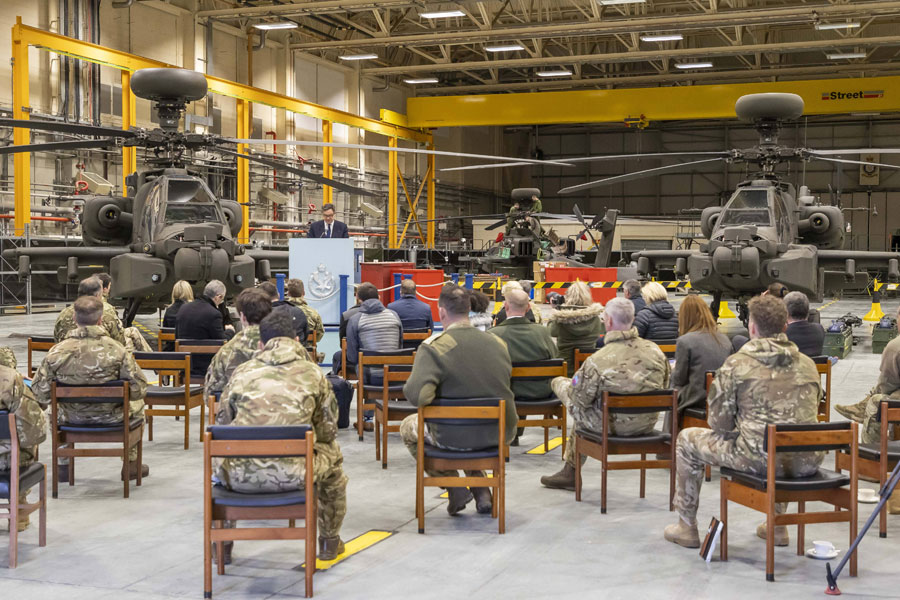
News Release 2, Whitehall, 21 January 2022: More than a dozen new AH-64E Apaches – one of the most advanced attack helicopters anywhere in the world – are undergoing test flights with the British Army.
The helicopters have improved sensors and lethality, upgraded weapons systems and heightened communications compared to their predecessor. Comparable to high-end super cars, the new Apaches also boast a top speed of 300kmh (186 mph). They are able to detect 256 potential targets at once, prioritising the most urgent threats within seconds, up to a range of 16km (10 miles) away – a distance 57 times the length of HMS Queen Elizabeth or over twice the length of the Grand National course.
Wattisham Flying Station has taken delivery of 14 of the new aircraft, with 36 more due to arrive by the summer of 2024. British Army test flights are underway, with a booster to aerial capability anticipated early next year when they enter operational capability.
Defence Procurement Minister, Jeremy Quin said: “There can be no doubt these impressive Apache helicopters will help the Army sustain its battle-winning capabilities in future operations.
“It’s great news that the long-term support for yet more cutting-edge technology will remain here in the UK, putting millions of pounds back into the British defence industry and supporting hundreds of jobs.”
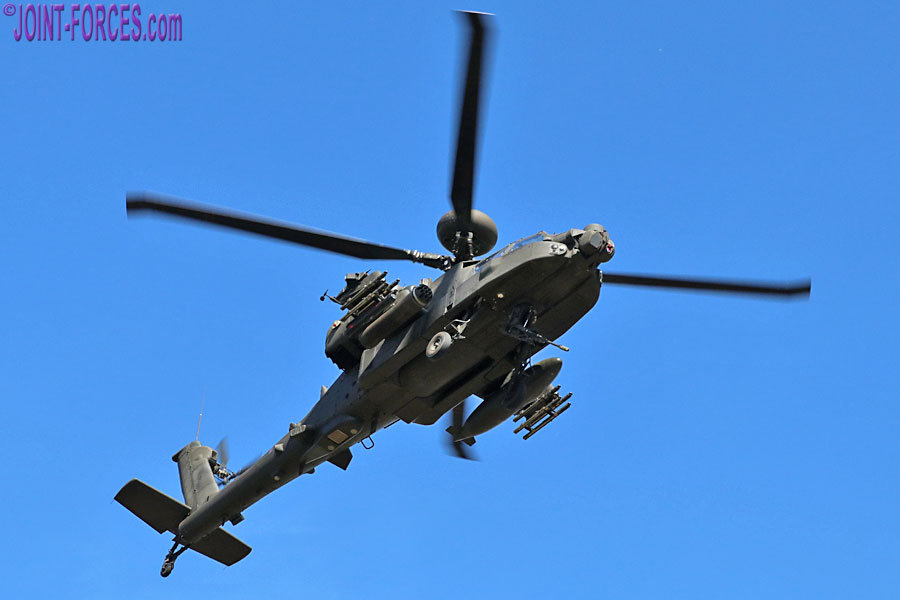
A 20-year agreement has been signed with Boeing Defence UK to maintain and support this new fleet of impressive attack helicopters. With £288 million confirmed for the first pricing period in place until July 2025, the agreement will create more than 200 jobs in the UK, including 165 for the Army Aviation Centre at Middle Wallop in Hampshire and 45 at Wattisham Flying Station in Suffolk.
The British Army has been utilising the world-leading Apache capability since 2005, with the attack helicopters seeing action in Iraq, Afghanistan and Libya.
The Deputy Chief of the General Staff, Lieutenant General Sir Chris Tickell KBE said: “I am delighted at the introduction of the 4th generation AH-64E into British Army service, signifying our commitment to investing in the right equipment for our people to compete and win against the threats facing the UK.
“Within Future Soldier, we committed to winning the deep battle so that the close battle is as anti-climactic as possible, thereby reducing the risk to our people. The AH-64E is a truly world-beating capability that will, alongside other capabilities we are introducing, ensure we succeed.”
The Long-Term Training and Support Service (LTTSS) will progressively take over from the initial support and conversion training provided by the US-Government under Foreign Military Sale interim arrangements. The contract will cover aircraft design organisation services, maintenance, logistics support, plus pilot, maintainer and groundcrew training. Boeing already has more than 40 employees working alongside the Army Air Corps providing training for the Mk1 Apache at the Attack Helicopter Training School at Middle Wallop.
DE&S Director Helicopters, Keith Bethell, said: “Ensuring the new Apache AH-64E fleet is airworthy and ready to serve the British Army is essential, which is why we were delighted to negotiate a long-term training and support service with Boeing Defence UK as part of our Rotary Wing Enterprise involving the Front Line Commands, DE&S and Industry.
“Not only will it keep the Apaches in the best possible condition for deployment, it will provide expert training for pilots and ground crew while creating long-term, sustainable jobs for industry.”
The replacement of the MK1 with the AH-64E – built by Boeing and already in service with the US Army – was announced in 2016 as part of a $2.3 billion deal. This new model, which is now being flown in the UK, has improved sensors and avionics as well as greater performance that will enable the army to sustain its battle-winning capabilities in future operations.
This programme reinforces the ambition laid out in the Defence Command Paper and recent Future Soldier announcement to transform the Army into a more agile, integrated, lethal, expeditionary force, showing the Army’s investment in battle-winning technology.
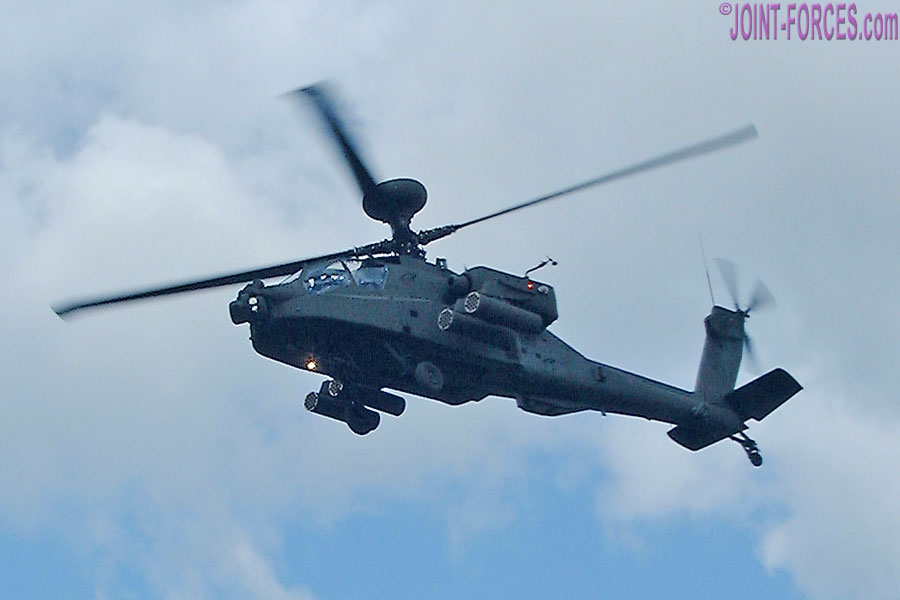
[© Bob Morrison]
~$~


